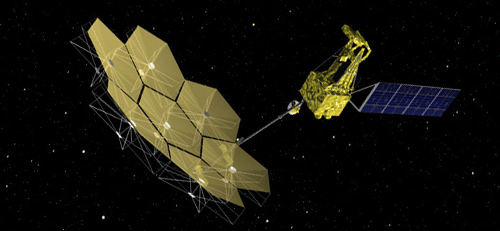This is a large cooled space telescope 2.5 m in diameter built to answer questions related to the evolution of the Milky Way and the formation of planetary systems. How was space created and how has it evolved? Where do living organisms come from and how were they created? This telescope will search for clues to these questions.
SPICA (Space Infrared Telescope for Cosmology and Astrophysics) is a next generation infrared astronomical satellite designed to “elucidate the process by which space became an abundances of diverse worlds out of heavy elements and interstellar dust and the process by which habitable planetary worlds were created.” Japan and Europe are working together on the development of this project with an eye for a 2027-2028 launch date. For their two main goals, researchers hope to elucidate “the fertilization of space through dust and heavy elements from the evolution of the Milk Way” and “the formation of planetary systems which have resulted in inhabitable worlds.”
In order to achieve these goals, SPICA is equipped with two advanced observational devices, the SAFARI far-infrared observational device and the SMI mid-infrared observational device, and a large infrared telescope 2.5 m in diameter cooled to an ultra-low temperature of 8 K (-265℃). In order to cool the telescope and the observational devices to ultra-low temperatures for high efficiency and to achieve an advanced level of observation, SPICA will make observations from the second Lagrange point (L2) in the Sun-Earth system, located 1.5 million km from Earth.





